Here’s an inside guide on how to visit the dreamy Ecuador cloud forests – and why you should.
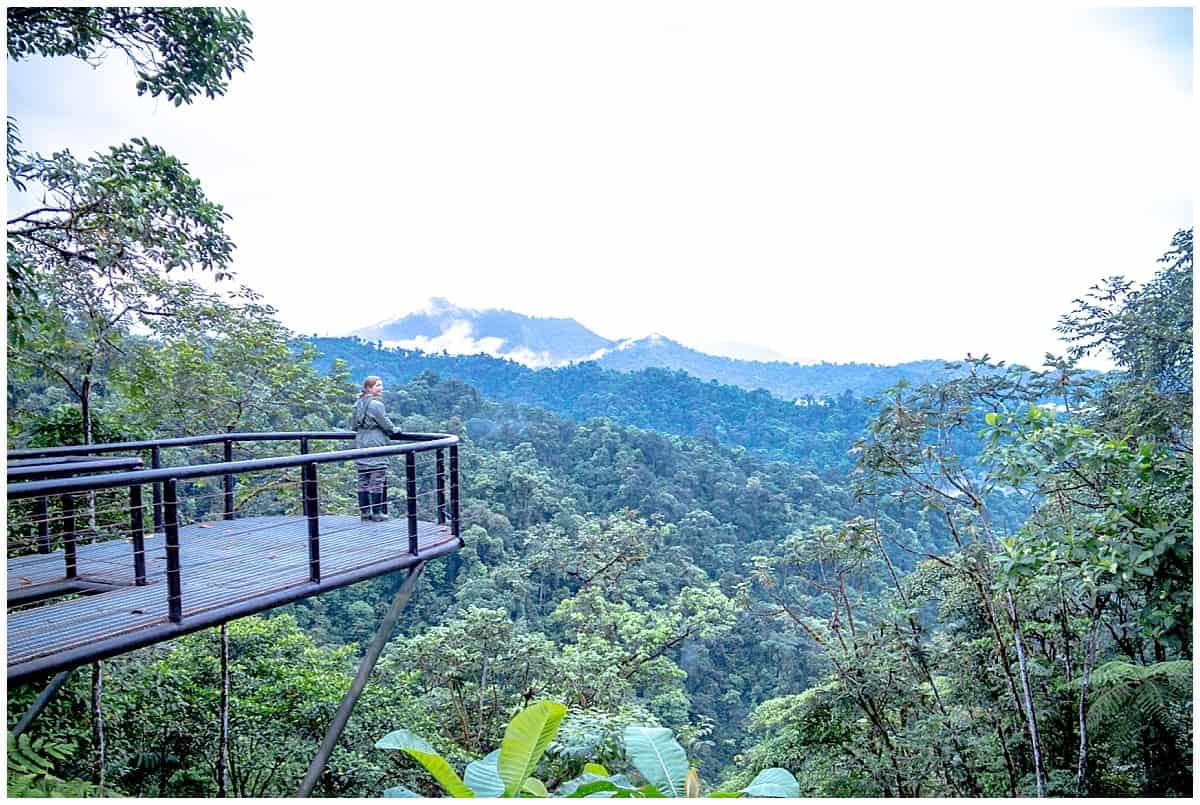
The Cloud Forests of Ecuador
The cloud forests of Ecuador are not awash with colour. Instead, they pick a single one and run with it. Green isn’t just green here, it’s gob smacking, gut punching, grandstanding green, a green that explodes with greedy, reckless abandon.
A green that brings lesser sights to life, like the web of a spider or the jagged skeleton of a leaf that catches raindrops between yesterday’s green.
Rain but not from the sky
Rain, too. There’s plenty of rain here, or at least that’s the first impression. It’s also the second, since rain does fall most of the time. The forest’s secret, however, lies in the fact that rain manages to fall from the leaves without falling from the sky. Clouds condense on the greenery itself, gathering, trembling, amassing and then rolling with a drip and a flourish from the tip of a leaf to the next.
At 2000 metres above sea level, here’s why you should visit the Ecuadorian cloud forests.
Fun Facts About the Ecuador Cloud Forests
- The cloud forests of Ecuador are one of the most biodiverse regions anywhere on the planet.
- An estimated 500 types of bird species live in this habitat alongside animals such as ocelots, anteaters, monkeys, and peccaries.
- Some of the birds have fantastic names: the Andean cock of the rock; the coronet, the booted racket-tail, the violet-tailed sylph and the fawn-breasted brilliant. What’s more, those are all hummingbirds.
- Ecuador’s cloud forest is also home to toucans and trogons; both the golden-headed quetzal and the plate-billed mountain toucan are fairly common.
- It’s wise to keep an eye on the ground lest you trample on a giant earthworm. By giant, we mean snake-size.
- Harder to see due to their camouflage are tree frogs, grass frogs, and other amphibians. If you feel something wet and sloppy land on your skin, that’s what it could be…
- Spectacled bears are harder to find. But they are out there…
What is a Cloud Forest?
A cloud forest is a tropical or sub-tropical forest with a near persistent cloud cover. According to the International Cloud Atlas, this cloud canopy cover is called the silvagenitus.
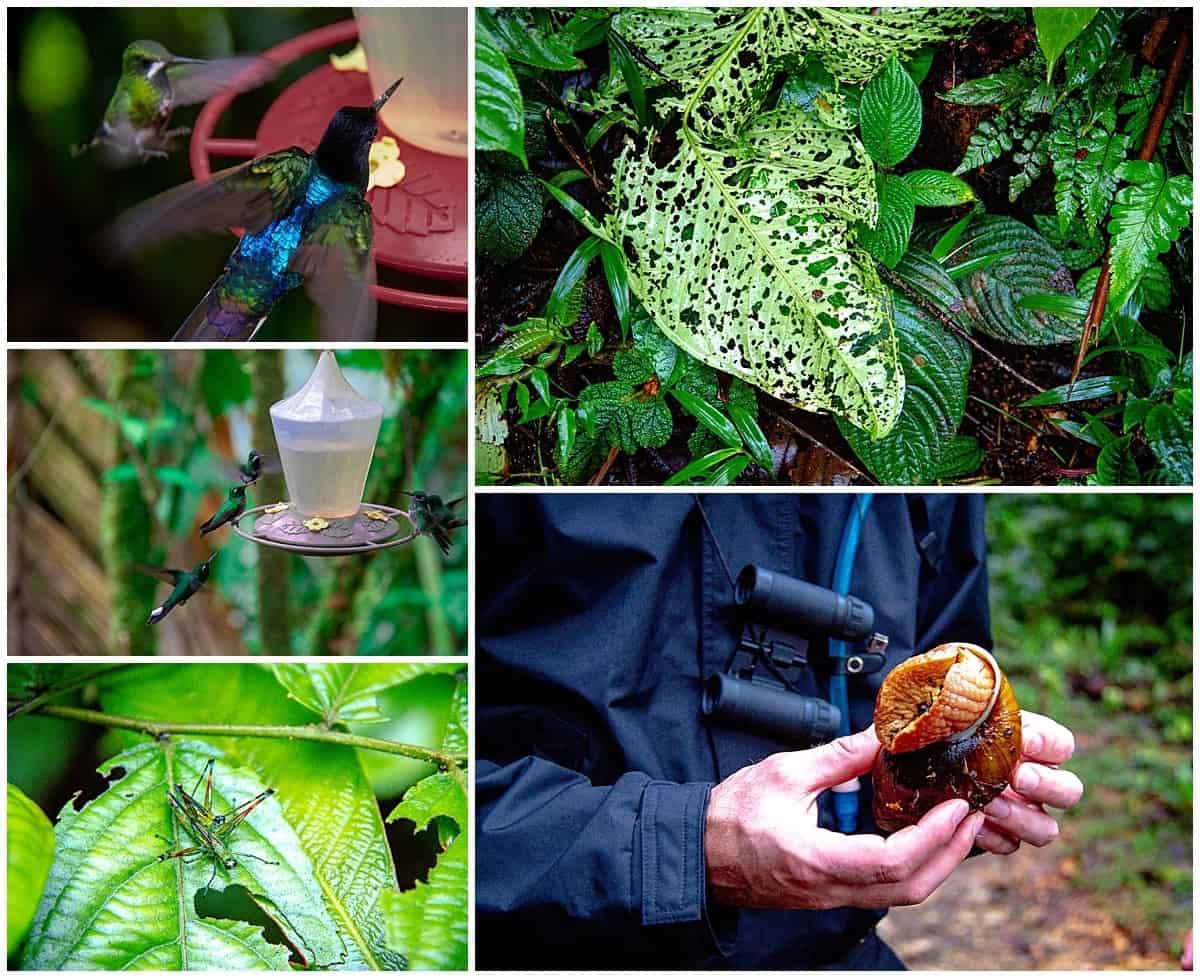
What is it like to visit the cloud forests in Ecuador?
The leaves resemble umbrellas drawn straight from Thumbelina’s tales. The tree trunks stretch into the grey bulbous mist like scaffolding for skyscrapers, while the wildlife itself… is shy.
Pumas prowl at night, so I’m told. And raccoons by day, as I’ve seen only moments ago.
Butterflies use fake snake eyes to scare predators away while hummingbirds flit and fuzz and buzz around so close you can feel the flutter of their wings.
In short, I’m learning that beneath the green lurks a less flash wildlife. One that requires patience, a degree of silence, and a curious and inquisitive eye.
Orangutans do not blaze in orange in this part of the world. You won’t hear the heavy footfall of elephants nor the orchestral weight of the whale.
But the beauty is no less bewildering. It just requires patience and comes cloaked in both grey and iridescent green.
Why are they called Cloud Forests?
The term seems to be a literal interpretation of how these forests appear. Low-hanging clouds hover over the upper canopy of the trees, giving off the appearance of permanent fog. The moisture condenses onto the leaves of trees and drips onto the lower plants. The water comes from the clouds, but not through rain.
- Recommended reading: Pre-Columbian Art in Ecuador and the Surprising Question It Asks
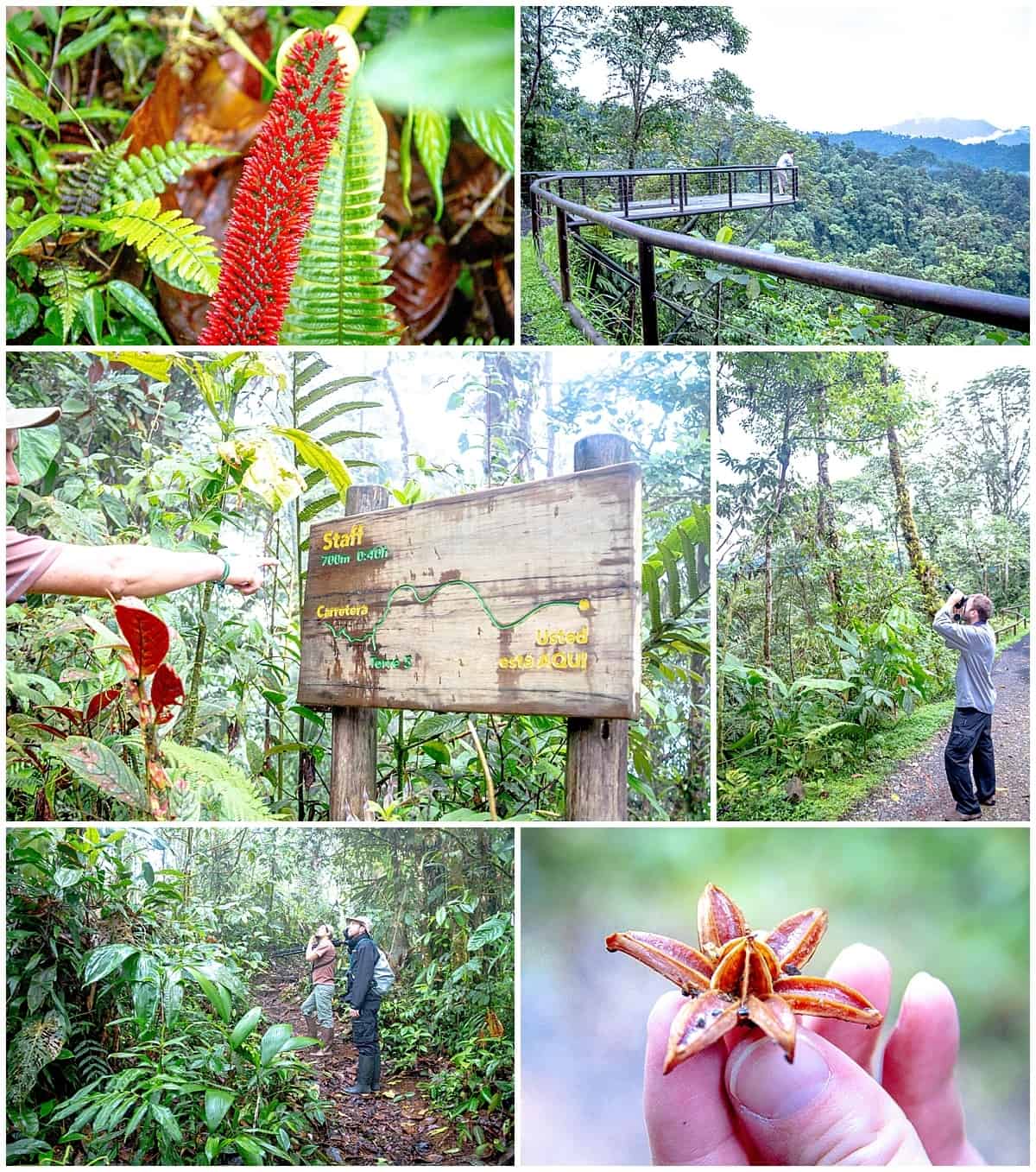
Amazing Things to Do in Ecuador’s Cloud Forests
Let’s take a look at what you can do in the Ecuadorian cloud forests.
Live and breathe birdwatching
Birdwatching is, of course, a major reason for visiting the cloud forests in Ecuador: it is home to thousands of species of birds. You can see the club-winged manakin, hummingbirds and coronets and other exotic birds and the eco-lodges are set up for success with viewing platforms, observation decks and walls of glass windows. Bring your own binoculars for the best results.
Chase waterfalls
It can get hot and sticky in the cloud forest and there’s no better way to refresh yourself than to wade into one of the many hidden waterfalls. Reaching to 190 feet, some even have pools at the bottom, if you want to go the whole hog and have a swim.
Look for the spectacled bear
Just because we didn’t manage to find one doesn’t mean you won’t. The Andean bear or spectacled bear is the inspiration for Paddington Bear and these biosphere reserves are one of the best places to try to see these iconic species. Look out for howler monkeys too, while you’re there.
Frolic with frogs
Let’s not forget the amphibians, another great source of interest in the cloud forest. Look out for the Mashpi torrenteer frog in its natural surroundings.
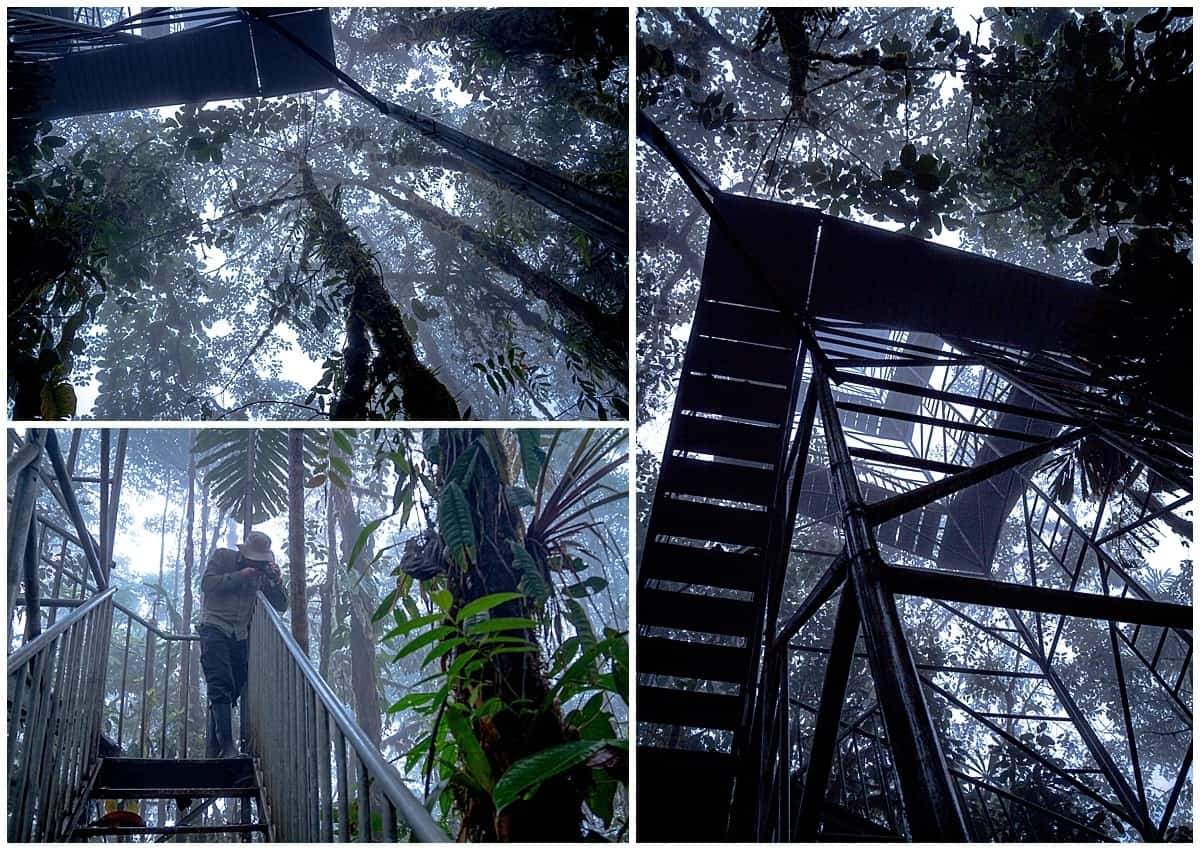
Climb observation canopies
As well as walking on the ground, you can climb steep, steep towers through the canopy to sunlight at the top. This is a great way of seeing how the cloud forest changes from the earth to the sky and a perfect place for getting a sense of perspective.
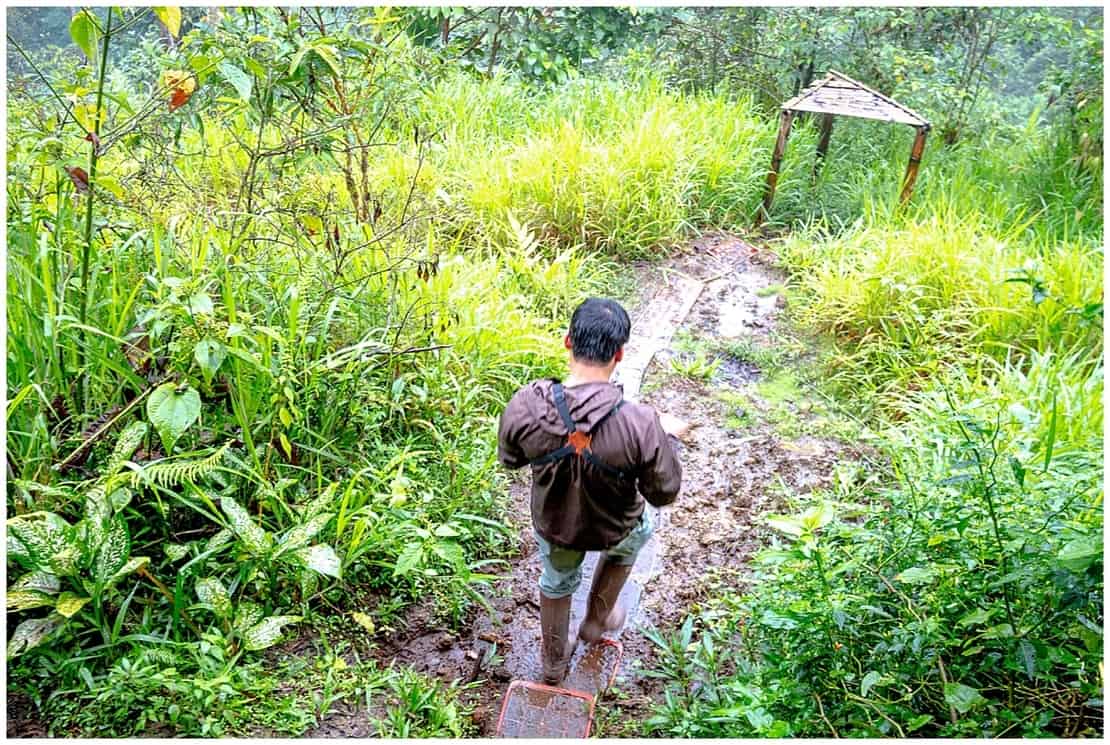
Go hiking
Of course, Ecuador’s cloud forests are made for hiking, with trails passing giant snails and colourful plants. You can take a short stroll of 30 minutes or so or spend days on end making your way through the undergrowth by foot. But all of that takes place at ground level, amid the squelch and security of nominally dry land.
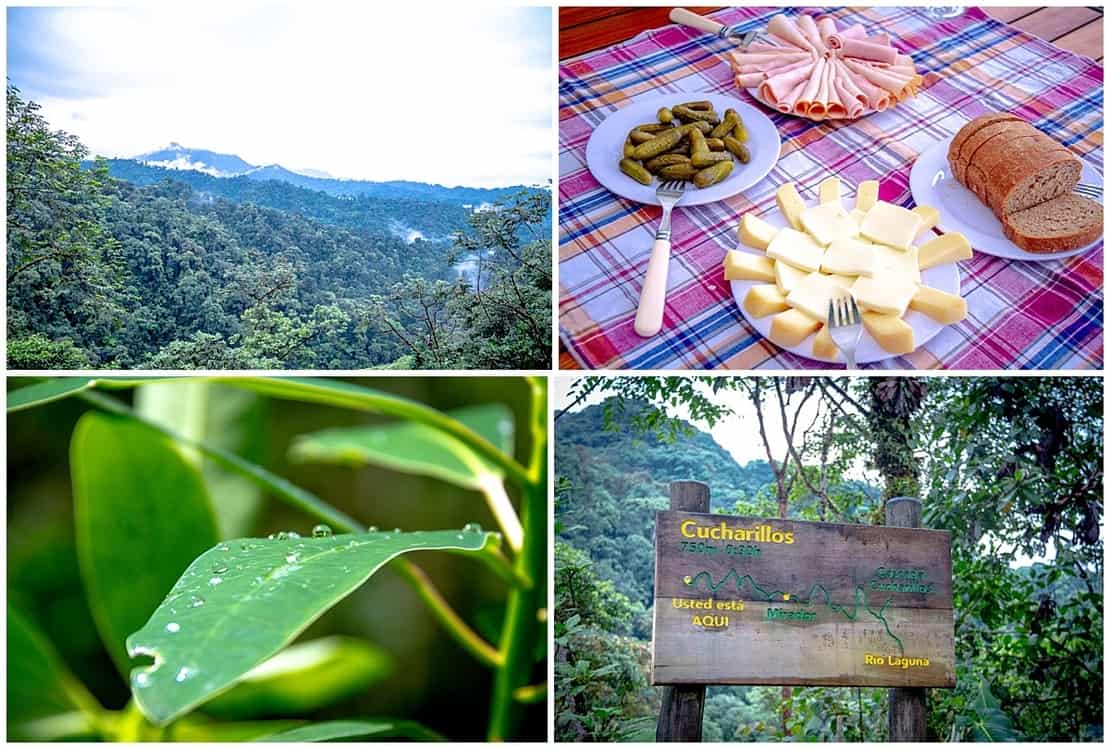
Pause for a picnic
Make an event of your trip through the cloud forest by setting up a decent picnic at midday. Indulge in Ecuadorian favourites like ceviche and pan blanco.
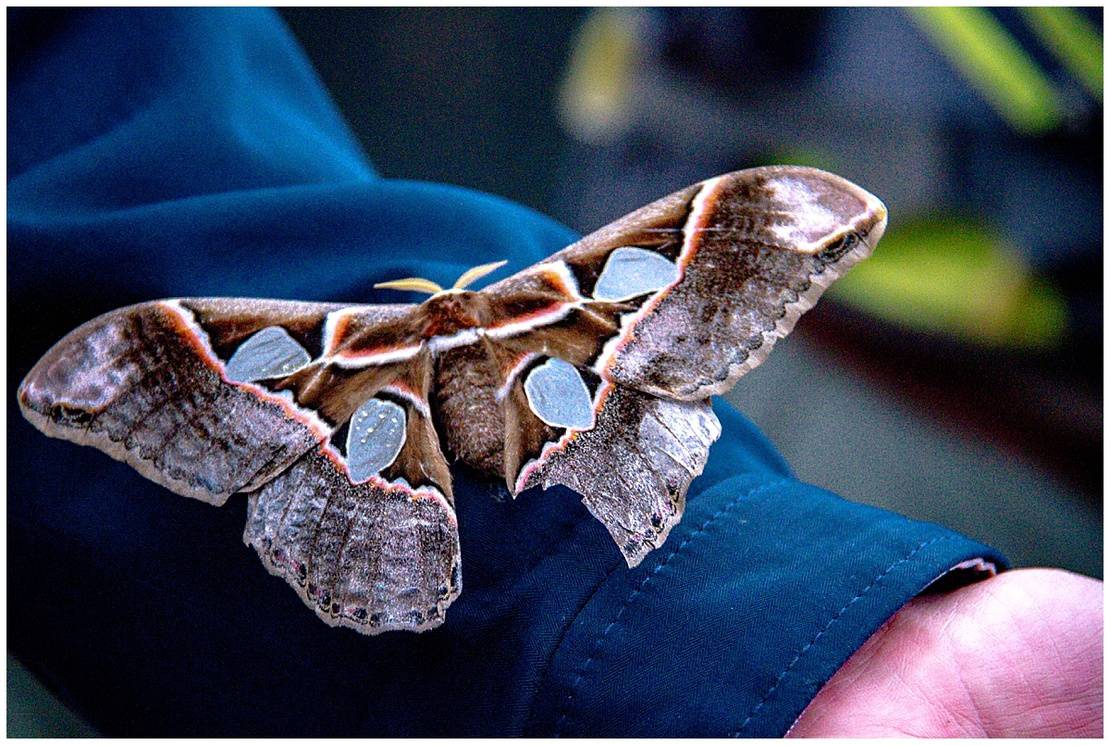
Be one with butterflies
It’s hard to believe the size of the moths and butterflies in the cloud forests until you see them. Dazzlingly beautiful, you can either see them on the vegetation as you stroll around or if you wait long enough, one may land on you.
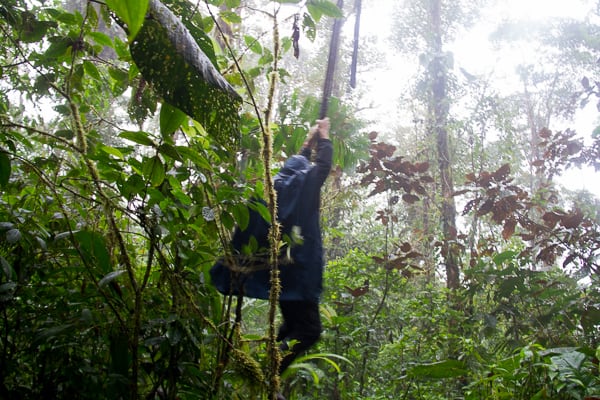
Swing on the vine like Tarzan
The Ecuador cloud forests have long, thick, strong vines. If you’re feeling brave enough, as Mr Travel Lab was, swing through the cool mists like Tarzan. Just wear more clothes because of the insects and all that…
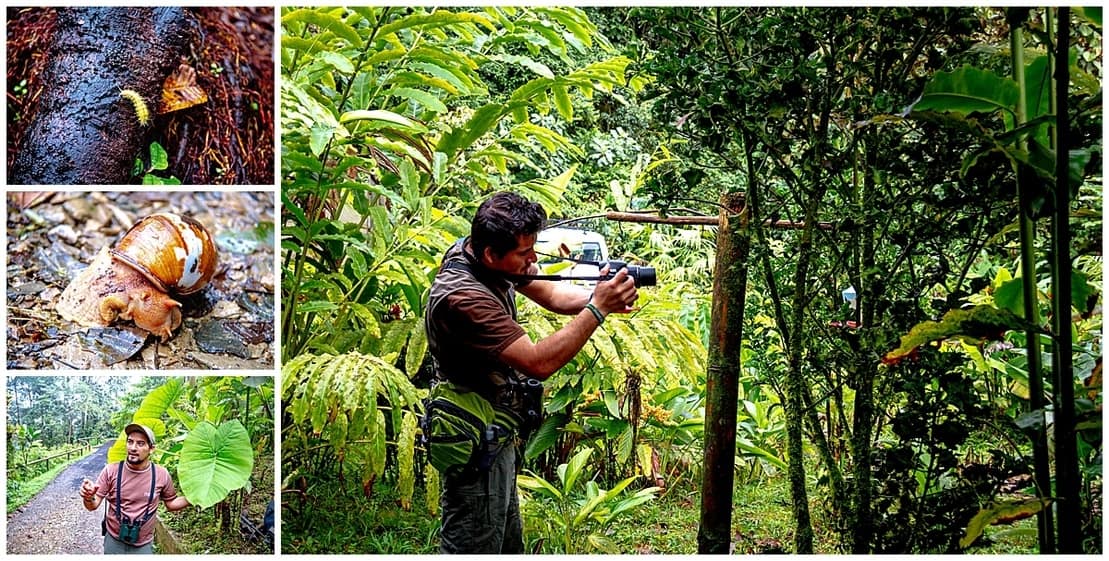
Learn about botany
You can pair up with an experienced naturalist guide and learn while you hike or lose yourself in the beauty of nature while on the trail and then attend a lecture at your lodge at the end of the day. Mashpi, for example, has well qualified naturalists plus a mini library of resources for you to consult. Everything from plant species to wildlife.
Eat and drink well
It may feel as though you are in the middle of nowhere but that doesn’t mean you’ll be slumming it. The eco lodges in the cloud forests are luxurious properties which serve high quality three course meals.
Go cycling in the Air
For a slower sense of flying, you can try to cycle on a zip line. Here’s what it feels like…
We’re Cycling in the Air…
Yes, ladies and gentlemen, I want to close your eyes and imagine two things for me.
One, that you have the soundtrack from The Snowman playing in your head, ba-dooms and all. (We’re just going to cunningly switch the word walking to cycling.)
And two, that you’re high atop the cloud forest, ready to launch off into the mist on a rickety, stickety looking tandem bicycle thing with a roof hook.
That’s cycling in the air in the Ecuador cloud forest.
Join Conservation Projects
As you might expect from an area with so much biodiversity, you will find conservation projects aplenty. Exact details vary during the year but you can join local people as a citizen scientist to help collect data and protect this incredible place. It’s a great way to support local communities as well as the Andean cloud forest. Making these cloud forest trees more valuable alive than dead contributes significantly to overcoming the threat of climate change.
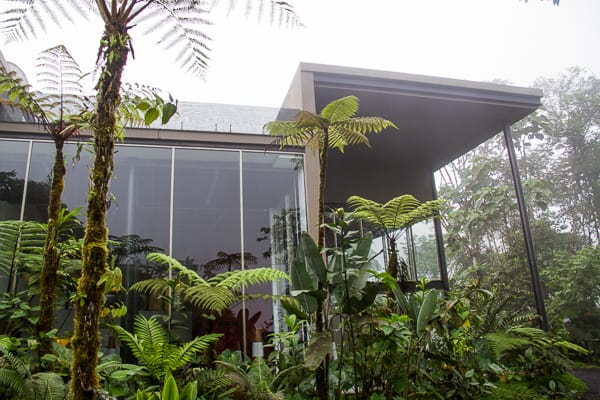
Where to Stay in Ecuador’s Cloud Forest
It is virtually impossible to travel independently here on account of the steep terrain and lack of easy access. As a result, most visitors stay in one of the private Eco Lodges in the thick of the forest.
That’s not a bad thing, though. These lodges are gorgeous.
The lodges create tours through the forest and typically arrange transfers from Quito.
Here are the main lodges
- Mashpi Eco Lodge – Luxurious eco-lodge with a sky bike a little further from Quito than the Bellavista in the Mashpi Reserve.
- The Bellavista Cloud Forest Reserve & Lodge – an affordable four star cloudforest lodge in Tandayapa near Mindo and relatively close to Quito.
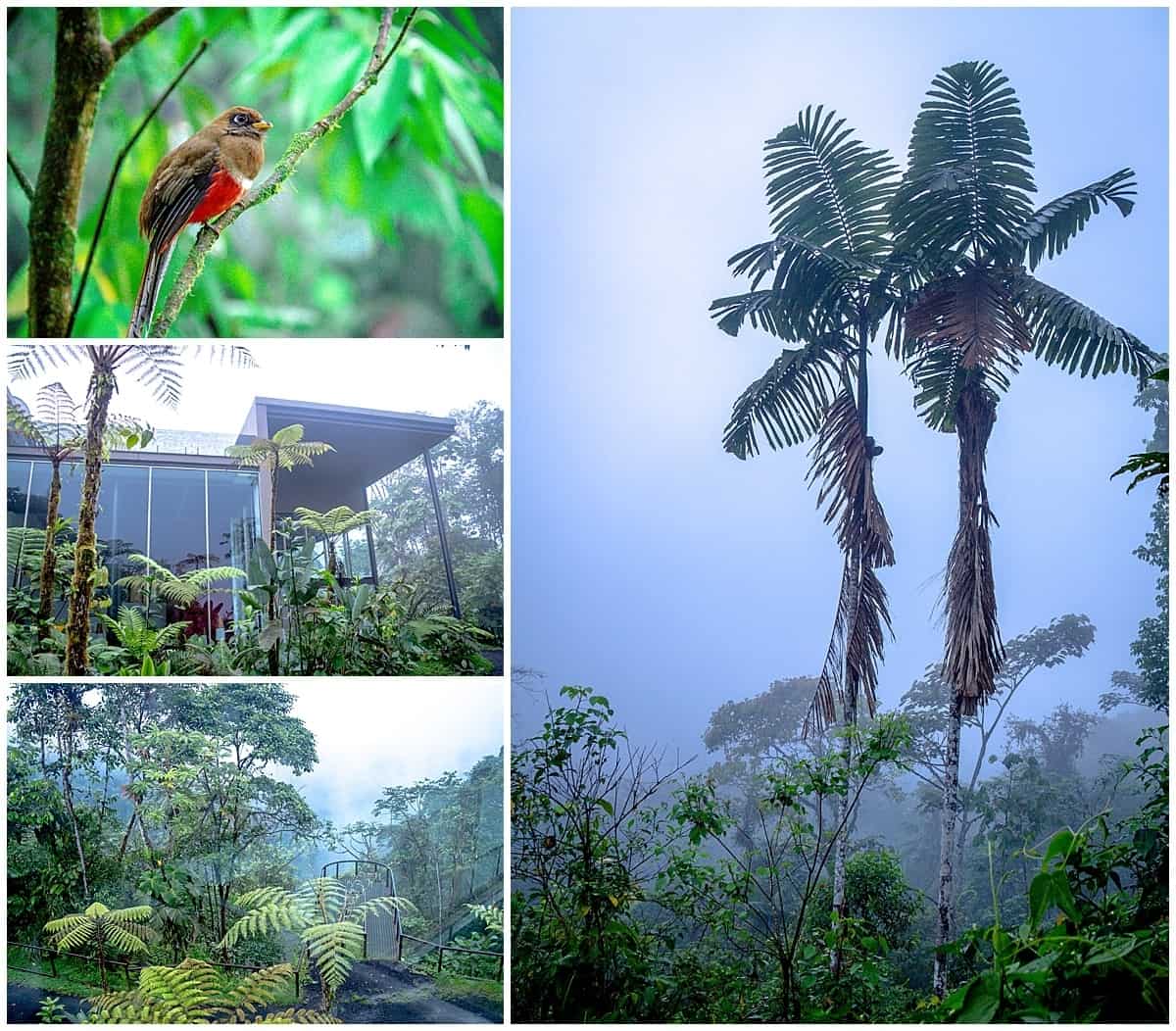
Mashpi Lodge Review
Mashpi Lodge is a one-of-a-kind wilderness retreat. While only three hours from downtown Quito, you wouldn’t know it once you’re there. The Lodge engulfs visitors in the surroundings of the cloud forest.
The lodge itself teeters (or so it feels) on the edge of an earthy cliff, immersing itself in the canopy layer of the cloud forest that cloaks these 22 rooms. Each room bears floor to ceiling windows and the dining area comes straight from the imagination of Jurassic Park itself.
Mornings start early, with swirling mist and hot swirling coffee, up on the rooftop on the lookout for birds. The bird diversity here is perfect for nature lovers.
Structure
The steel and glass structure has floor-to-floor, wall-to-wall windows throughout. The Lodge, which has 24 guest rooms, is situated on over 3,000 acres of rainforest, 80% of which has been untouched by man.
You are just as likely to wake up to see a monkey swinging past your room or a coronet preening by your window.
The spacious, stylish rooms are paired with a two-story dining room that allows for guests to be awed by nature as they dine.
Background & Facilities
Mashpi Lodge began when Roque Sevilla, the former mayor of Quito, purchased the land in order to protect the biodiverse area which was at risk following years of deforestation and goldmining. After nearly ten years of conservation efforts, Sevilla decided he need to share one of the most beautiful spots on earth with the world.
A team of naturalists and scientists staff the resort’s research centre; they lead hikes, give talks, and explain the natural habitats of the jungle. Lodge residents have the opportunity to explore by day and relax by night.
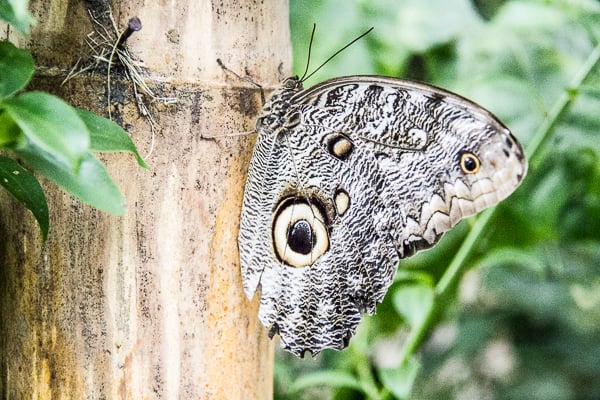
How to Visit the Cloud Forests of Ecuador
How do you get to the lodges in the cloud forest?
Most international travellers will arrive in Quito and then take a road transfer from there. It’s a long, bumpy drive but takes less than a day. Quito is also a fascinating city so I’d highly recommend you spend some time exploring the culture, art museums, markets and architecture.
When is the best time to visit the cloud forests of Ecuador?
The best time for bird watching is between December and April each year.
What is the most famous cloud forest in Ecuador?
Most people will tell you that the most famous cloud forest in Ecuador is the Mindo Cloud Forest.
Mindo is a biodiverse area located in the western slopes of the Andes Mountains, approximately 80 kilometers northwest of Quito, the capital of Ecuador.
The cloud forest in Mindo is renowned for its lush vegetation, diverse flora and fauna, and a unique ecosystem characterized by frequent cloud cover and mist. This ecosystem supports a wide variety of plant and animal species, including numerous species of orchids, butterflies, birds, and mammals.
What should you wear or pack when visiting the cloud forests of Ecuador?
Top Tip! Work out what to wear in the jungle with this handy guide. It includes hiking boots and rain jackets, obviously, but also includes other things that are easy to forget.
Can you visit the cloud forests as a day trip from Quito?
Yes, technically you can but you’ll spend a lot of time on the road. Dawn and dusk are the best times for birdwatching, so it’s really worth staying overnight.
Map Showing Ecuador’s Cloud Forests Near Quito
More From Ecuador
- A taste of Quito’s pre-colombian art is just what visitors need
- The oldest market in Quito has tales to tell
- What do the words Galapagos mean?

Nature at its best. Very nice shots of cloudforest. Thanks for sharing!
You’re very welcome – glad you enjoyed!
Abi,
Your travel writing is truly inspirational. We are currently in Quito and heading out for a day trip to the cloud forest tomorrow. I know a day trip will not be long enough, but we plan to return again in April towards the end of our trip. We have been in Quito for the past four days and as wonderful as it is in the city, I am anxious to see the beauty of the flora and fauna in the cloud forest!
Ah, hi Kristi, thanks for your kind words! Enjoy it on my behalf – I’m at the desk at the moment. Have fun!